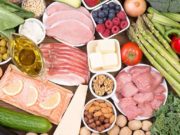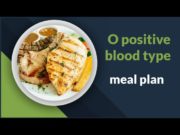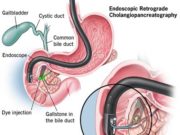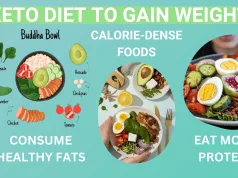How to start dieting for beginners can seem overwhelming, but it doesn’t have to be. This guide provides a simple and effective framework for making sustainable changes to your eating habits and achieving your weight loss goals. We’ll explore the fundamentals of healthy eating, setting realistic goals, creating a personalized meal plan, and incorporating exercise into your routine. You’ll learn how to make gradual changes, stay motivated, and overcome common pitfalls along the way.
This guide will empower you to take control of your health and embark on a journey of sustainable weight loss. You’ll discover that healthy eating can be enjoyable and rewarding, and that achieving your goals is within reach.
Understanding the Basics
Before embarking on a diet journey, it’s crucial to understand the fundamentals of healthy eating and sustainable weight loss. This section will clarify what constitutes a healthy diet, differentiate between fad diets and sustainable weight loss, and provide a comprehensive overview of essential food groups.
Defining a Healthy Diet
A healthy diet is not just about losing weight; it’s about nourishing your body with the nutrients it needs to thrive. A healthy diet is balanced, varied, and provides the right amount of calories, macronutrients (proteins, carbohydrates, and fats), and micronutrients (vitamins and minerals) to support overall health and well-being.
Distinguishing Fad Diets from Sustainable Weight Loss
Fad diets are often restrictive and promise quick weight loss results. However, they are often unsustainable in the long term and can lead to nutritional deficiencies and rebound weight gain. Sustainable weight loss, on the other hand, emphasizes gradual changes to dietary habits and lifestyle choices that are easier to maintain over time.
Essential Food Groups and Their Benefits
Understanding the benefits of different food groups is essential for building a healthy diet. Here’s a comprehensive list:
- Fruits: Rich in vitamins, minerals, and fiber, fruits support digestive health, boost immunity, and protect against chronic diseases. Examples include apples, oranges, berries, and bananas.
- Vegetables: Packed with antioxidants, vitamins, minerals, and fiber, vegetables promote gut health, reduce inflammation, and contribute to overall well-being. Examples include broccoli, spinach, carrots, and tomatoes.
- Grains: Grains are a good source of energy, fiber, and B vitamins. Choose whole grains over refined grains for optimal nutrition. Examples include brown rice, quinoa, and whole-wheat bread.
- Protein: Essential for building and repairing tissues, protein sources include lean meats, poultry, fish, beans, lentils, and tofu.
- Dairy: Dairy products are rich in calcium, vitamin D, and protein, supporting bone health and muscle function. Choose low-fat or fat-free options for a healthier choice.
- Healthy Fats: Essential for hormone production, cell function, and nutrient absorption, healthy fats are found in olive oil, avocados, nuts, and seeds.
Setting Realistic Goals
Setting realistic weight loss goals is crucial for long-term success. Aiming for drastic changes can lead to frustration and ultimately, giving up. Instead, focus on making gradual, sustainable changes that fit your lifestyle.
Calculating Calorie Needs
Calculating your daily calorie needs is essential for creating a calorie deficit, which is necessary for weight loss. A calorie deficit occurs when you consume fewer calories than you burn.
To calculate your daily calorie needs, you can use online calculators or consult a registered dietitian.
Here’s a simple formula to estimate your daily calorie needs:
- For women: (10 x weight in kilograms) + (6.25 x height in centimeters) – (5 x age in years) + 5
- For men: (10 x weight in kilograms) + (6.25 x height in centimeters) – (5 x age in years) + 5
Once you know your daily calorie needs, you can create a personalized calorie deficit by subtracting a reasonable amount, typically 500-1000 calories per day.
Establishing Realistic Timeframes
Setting realistic timeframes for achieving your weight loss goals is important. Remember that sustainable weight loss typically ranges from 1-2 pounds per week.
- Focus on gradual progress: Instead of aiming for rapid weight loss, prioritize making small, consistent changes to your diet and exercise habits.
- Celebrate milestones: Acknowledge your progress along the way and celebrate small victories. This will keep you motivated and engaged in your journey.
- Adjust your goals as needed: If you’re not seeing the desired results, don’t be afraid to adjust your goals or seek guidance from a healthcare professional.
Creating a Personalized Meal Plan: How To Start Dieting For Beginners
Designing a meal plan that works for you is crucial to achieving your dietary goals. It’s not about following a rigid, restrictive plan but about making sustainable changes that fit your lifestyle and preferences. A personalized meal plan helps you make informed food choices, track your calorie intake, and ensure you’re getting all the essential nutrients your body needs.
Sample Weekly Meal Plan
A sample weekly meal plan can serve as a starting point for your personalized plan. Remember to adjust portions and ingredients based on your individual needs and preferences.
Here’s a sample meal plan that incorporates various food groups:
- Monday:
- Breakfast: Oatmeal with berries and nuts
- Lunch: Grilled chicken salad with mixed greens, avocado, and a light vinaigrette
- Dinner: Salmon with roasted vegetables (broccoli, carrots, and bell peppers)
- Tuesday:
- Breakfast: Yogurt with granola and fruit
- Lunch: Lentil soup with whole-wheat bread
- Dinner: Chicken stir-fry with brown rice and mixed vegetables
- Wednesday:
- Breakfast: Scrambled eggs with whole-wheat toast and spinach
- Lunch: Leftover chicken stir-fry
- Dinner: Vegetarian chili with cornbread
- Thursday:
- Breakfast: Smoothie with fruit, yogurt, and spinach
- Lunch: Turkey sandwich on whole-wheat bread with lettuce, tomato, and avocado
- Dinner: Pasta with marinara sauce and vegetables
- Friday:
- Breakfast: Pancakes with fruit and syrup
- Lunch: Leftover pasta with marinara sauce and vegetables
- Dinner: Pizza with whole-wheat crust and lots of vegetables
- Saturday:
- Breakfast: Waffles with fruit and syrup
- Lunch: Out to eat with friends (choose a healthy option)
- Dinner: Grilled chicken with sweet potato fries
- Sunday:
- Breakfast: Eggs Benedict with whole-wheat English muffins
- Lunch: Leftover grilled chicken with sweet potato fries
- Dinner: Roasted chicken with mashed potatoes and green beans
Incorporating Healthy Snacks
Snacks can help you manage hunger and prevent overeating at meals. Choose snacks that are low in calories, high in nutrients, and satisfying.
Here are some healthy snack ideas:
- Fruits (apple, banana, berries)
- Vegetables (carrots, celery, cucumbers)
- Nuts and seeds (almonds, walnuts, sunflower seeds)
- Yogurt (Greek yogurt, plain yogurt)
- Hard-boiled eggs
Meal Prepping Strategies
Meal prepping can save you time and money, and it can also help you stay on track with your diet. Set aside a few hours each week to prepare meals and snacks in advance.
Here are some meal prepping strategies:
- Cook large batches of food that can be stored and reheated later.
- Prepare individual portions of meals and snacks to make them easy to grab and go.
- Pack healthy snacks in advance to avoid impulse purchases.
Making Gradual Changes
Making gradual changes to your eating habits is the key to long-term success in your dieting journey. Instead of drastic overhauls that are often unsustainable, focusing on small, consistent adjustments can help you build healthy habits that last.
Benefits of Gradual Changes
Making gradual changes to your diet offers numerous benefits. First, it increases your chances of success by reducing the likelihood of feeling overwhelmed or deprived. When you make small changes, you’re more likely to stick with them and gradually build momentum towards your goals. Second, gradual changes are easier to incorporate into your lifestyle. By making small adjustments, you can adapt your eating habits without disrupting your daily routine. Finally, gradual changes are more sustainable. When you make drastic changes, you may experience cravings or feelings of deprivation, leading to setbacks. By making small, consistent changes, you can create a sustainable approach to healthy eating that you can maintain over the long term.
Common Pitfalls and Strategies
While gradual changes are beneficial, there are some common pitfalls to be aware of.
Overdoing It
One common pitfall is trying to change too much at once. This can lead to feeling overwhelmed and discouraged, making it difficult to stick with your plan. To avoid this, start with just one or two small changes at a time. For example, instead of eliminating all sugary drinks, try switching to water or unsweetened tea for one meal a day. Once you’ve successfully incorporated these changes, you can gradually add more.
Lack of Planning
Another pitfall is failing to plan ahead. Without a plan, you’re more likely to make unhealthy choices when you’re hungry or pressed for time. To overcome this, plan your meals and snacks in advance, keeping healthy options readily available. This can help you avoid impulsive decisions and stay on track with your goals.
Lack of Consistency
Consistency is key to success in any diet. If you’re not consistent with your efforts, you’re less likely to see results. To stay consistent, make gradual changes part of your routine. For example, you could start by incorporating a new healthy recipe into your weekly meal plan.
Lack of Patience
Patience is crucial when making gradual changes. It takes time to develop new habits and see results. Be patient with yourself and don’t get discouraged if you don’t see immediate results. Remember, sustainable change takes time and effort.
Staying Motivated
Dieting can be a long and challenging journey. It’s easy to get discouraged, especially when you don’t see immediate results. However, staying motivated is crucial for success. There are many strategies you can use to keep yourself on track and reach your goals.
Inspiring Stories
Hearing about other people’s success stories can be incredibly motivating. It reminds you that it’s possible to achieve your goals, no matter how challenging they may seem.
- For example, consider the story of Sarah, a busy mother of two who lost 50 pounds in a year by making gradual changes to her diet and incorporating regular exercise into her routine. She started by cutting out sugary drinks and processed foods and gradually increased her intake of fruits, vegetables, and whole grains. Sarah also joined a local gym and started with short, manageable workouts that she gradually increased over time. Sarah’s journey is a testament to the power of consistency and dedication. Her story serves as an inspiration to anyone who wants to make positive changes to their health and well-being.
Staying Motivated and Avoiding Setbacks
There are several strategies you can use to stay motivated and avoid setbacks on your weight loss journey.
- Set Realistic Goals: It’s important to set achievable goals that you can realistically maintain over time. Don’t try to lose too much weight too quickly. Aim to lose 1-2 pounds per week, which is a healthy and sustainable rate of weight loss.
- Find a Support System: Surround yourself with supportive friends, family members, or a weight loss group. Having a support system can make a big difference in staying motivated. They can offer encouragement, accountability, and share their own experiences.
- Reward Yourself: Celebrate your successes, no matter how small they may seem. When you reach a milestone, reward yourself with something you enjoy, like a new workout outfit or a massage.
- Don’t Give Up: Everyone experiences setbacks. If you slip up, don’t beat yourself up about it. Just get back on track as soon as possible.
Tracking Progress and Celebrating Milestones, How to start dieting for beginners
Tracking your progress can help you stay motivated and see how far you’ve come. It can also help you identify areas where you need to make adjustments. There are many ways to track your progress.
- Keep a Food Journal: A food journal can help you become more aware of your eating habits and identify areas where you can make changes.
- Take Progress Photos: Taking progress photos can help you visualize your results and stay motivated.
- Measure Your Body: Take measurements of your waist, hips, and thighs to track your progress.
- Celebrate Milestones: When you reach a milestone, celebrate your success! This could be anything from losing a certain amount of weight to fitting into a smaller size of clothing.
Incorporating Exercise

Exercise is a crucial component of a healthy weight loss journey, complementing your dietary changes and accelerating your progress. It not only helps you shed pounds but also offers numerous health benefits, including improved mood, increased energy levels, and a reduced risk of chronic diseases. While incorporating exercise into your routine might seem daunting, it doesn’t have to be a major overhaul. You can start small and gradually build up your activity levels.
Benefits of Regular Physical Activity
Regular physical activity plays a vital role in weight loss by increasing your calorie expenditure and boosting your metabolism. This means you burn more calories throughout the day, even when you’re not exercising. Additionally, exercise helps build muscle mass, which further contributes to a higher metabolism.
- Increased Calorie Burn: Exercise directly burns calories, helping you create a calorie deficit, which is essential for weight loss.
- Improved Metabolism: Exercise boosts your metabolism, meaning your body burns calories more efficiently even when you’re at rest.
- Enhanced Muscle Mass: Muscle tissue burns more calories than fat tissue, so building muscle through exercise can help you burn more calories throughout the day.
- Improved Insulin Sensitivity: Regular physical activity improves your body’s ability to use insulin, which helps regulate blood sugar levels and reduces your risk of developing type 2 diabetes.
- Reduced Risk of Chronic Diseases: Exercise has been shown to reduce the risk of developing chronic diseases such as heart disease, stroke, type 2 diabetes, and certain types of cancer.
Beginner-Friendly Exercise Routines
For beginners, starting with simple, enjoyable activities is key. The goal is to build consistency and gradually increase the intensity and duration of your workouts.
- Brisk Walking: Walking is a low-impact, accessible exercise that can be easily incorporated into your daily routine. Aim for at least 30 minutes of brisk walking most days of the week.
- Cycling: Cycling is another great option for cardio, offering a fun way to explore your surroundings while getting a workout. Start with shorter rides and gradually increase the distance and intensity.
- Swimming: Swimming is a low-impact, full-body workout that’s easy on your joints. It’s a great option for people of all fitness levels.
- Yoga or Pilates: These practices focus on strength, flexibility, and balance, improving overall fitness and reducing stress.
- Strength Training: Incorporating strength training exercises, such as squats, push-ups, and lunges, helps build muscle mass and boost your metabolism.
Finding Enjoyable Activities
The key to long-term exercise adherence is finding activities you genuinely enjoy. If you dread your workouts, you’re less likely to stick with them. Experiment with different activities until you discover ones that you find motivating and fun. Consider joining a fitness class, trying a new sport, or finding a workout buddy to keep you accountable.
- Listen to Your Body: Start slowly and gradually increase the intensity and duration of your workouts. Don’t push yourself too hard too soon, as this can lead to injury.
- Find a Workout Buddy: Having a workout buddy can provide motivation, accountability, and a sense of camaraderie.
- Set Realistic Goals: Start with small, achievable goals and gradually work your way up. Celebrate your successes along the way to stay motivated.
- Make It a Habit: Schedule your workouts into your calendar and treat them as important appointments.
- Variety is Key: Mix up your workouts to keep things interesting and prevent boredom.
Seeking Professional Guidance
While you can embark on a weight-loss journey independently, consulting a registered dietitian or nutritionist can significantly enhance your success and overall well-being. These professionals provide expert guidance, personalized plans, and support, ensuring your weight loss journey is safe, effective, and sustainable.
Benefits of Consulting a Professional
Seeking professional guidance offers numerous advantages, including:
- Personalized Nutrition Plans: A registered dietitian or nutritionist will assess your individual needs, health history, and goals to create a tailored meal plan that aligns with your preferences and lifestyle. This personalized approach increases the likelihood of adherence and long-term success.
- Scientifically Sound Strategies: Professionals provide evidence-based advice, ensuring your weight loss methods are safe, effective, and sustainable. They can debunk common diet myths and guide you towards scientifically proven strategies.
- Addressing Underlying Health Conditions: Professionals can identify and address any underlying health conditions that may affect your weight loss journey. They can recommend appropriate modifications to your diet and exercise plan, ensuring your safety and well-being.
- Motivation and Support: Having a professional to guide and support you can significantly boost your motivation and help you stay on track. They provide accountability and encouragement, making it easier to overcome challenges and achieve your goals.
Finding a Qualified Professional
Finding a registered dietitian or nutritionist is easier than you might think. Several resources can help you locate a qualified professional in your area:
- Academy of Nutrition and Dietetics: The Academy of Nutrition and Dietetics (AND) is the world’s largest organization of food and nutrition professionals. Their website offers a searchable database of registered dietitians and nutritionists, allowing you to find professionals in your area.
- American College of Sports Medicine: The American College of Sports Medicine (ACSM) is a professional organization for exercise physiologists and other health professionals. Their website also provides a directory of certified professionals, including registered dietitians and nutritionists.
- Local Hospitals and Clinics: Many hospitals and clinics have registered dietitians and nutritionists on staff. You can contact your local hospital or clinic to inquire about their services and find a professional who meets your needs.
Addressing Underlying Health Conditions
It is crucial to address any underlying health conditions that may affect your weight loss journey. Consulting a doctor or other healthcare professional is essential to ensure you receive the appropriate care and guidance.
- Hormonal Imbalances: Conditions like hypothyroidism or polycystic ovary syndrome (PCOS) can affect metabolism and make weight loss challenging. Addressing these imbalances through medication or lifestyle modifications is crucial.
- Chronic Diseases: Chronic diseases like diabetes, heart disease, or arthritis can also impact weight loss. Working with your doctor and a registered dietitian to manage these conditions and create a safe and effective weight loss plan is vital.
- Mental Health Conditions: Depression, anxiety, and other mental health conditions can contribute to unhealthy eating habits and weight gain. Seeking professional help for these conditions can improve your overall well-being and support your weight loss efforts.
Last Recap
Remember, sustainable weight loss is a marathon, not a sprint. By focusing on making small, gradual changes to your diet and lifestyle, you can create lasting habits that support your overall health and well-being. Don’t be afraid to seek professional guidance from a registered dietitian or nutritionist to personalize your journey and address any underlying health conditions. With dedication and consistency, you can achieve your weight loss goals and enjoy a healthier, happier you.
Key Questions Answered
What are some common diet mistakes beginners make?
Common mistakes include restricting calories too drastically, eliminating entire food groups, and not being patient with results. It’s important to focus on sustainable changes and avoid extreme measures.
How much weight can I realistically lose in a month?
A healthy weight loss rate is 1-2 pounds per week. Focus on gradual progress rather than quick fixes.
What are some healthy snacks to incorporate into my diet?
Healthy snacks include fruits, vegetables, nuts, seeds, yogurt, and hard-boiled eggs. These provide nutrients and help keep you feeling full between meals.
























